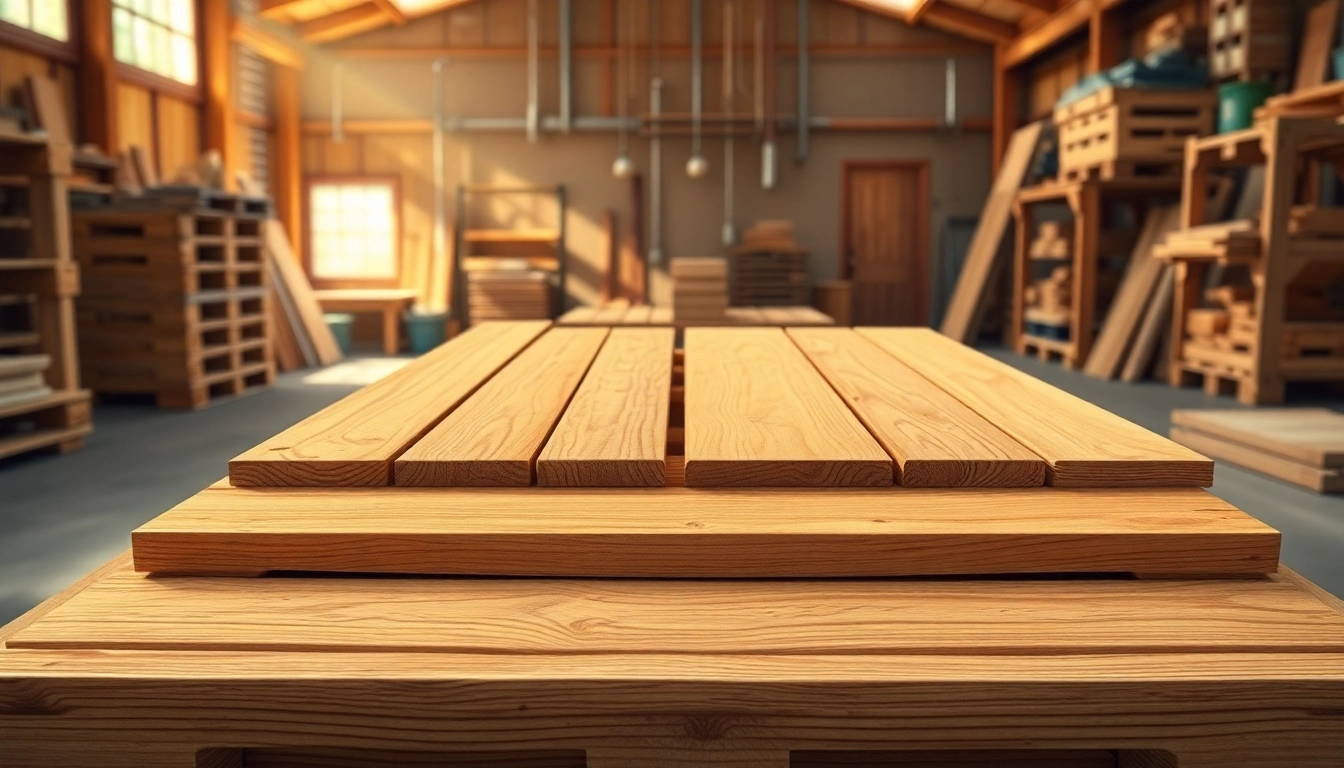Introduction to Pallet Elements & Pallet Wood
In the world of logistics and transportation, pallet elements and pallet wood serve as the backbone for efficient goods handling. These wooden platforms are not merely structural necessities; they represent a significant intersection of functionality, economics, and sustainability in modern supply chains. When selecting and utilizing pallet elements, it’s crucial to understand their composition, potential applications, and the standards of quality involved in their construction. In this comprehensive guide, we will delve into the intricate world of Pallet Elements & Pallet Wood, covering essential components, types of wood utilized, and best practices for handling them effectively.
What are Pallet Elements?
Pallet elements consist of various components that collectively form the structure of a pallet, which is used extensively in warehousing and transportation. The main parts include the top deck boards, stringers, and bottom deck boards. Each of these components plays a vital role in ensuring the pallet’s capacity to support loads, facilitate transport, and withstand various environmental conditions.
Common Uses of Pallet Wood
Pallet wood has a multitude of uses beyond its primary role of transporting goods. Businesses leverage pallet wood for crafting furniture, decorations, fencing, and even small structures. The rustic charm of reclaimed pallet wood has made it increasingly popular among DIY enthusiasts and interior designers. Additionally, in manufacturing sectors, the material serves applications ranging from forming displays to creating temporary structures, thereby demonstrating its versatility and value.
The Importance of Quality in Pallet Construction
Quality is paramount when it comes to pallet construction, as it directly affects durability, safety, and cost-per-use. High-quality pallet elements minimize the risk of breakage and improve the overall efficiency of supply chain operations. Companies must invest in robust selection processes for raw materials and adhere to strict manufacturing standards to ensure that the pallets will not fail under load, which could lead to significant logistical setbacks.
Components of Pallet Elements
Top Deck Boards: Definition and Types
Top deck boards are the upper surface of the pallet where goods are placed. They come in various widths, lengths, and materials, typically categorized as solid or ventilated. Solid boards provide more stability, while ventilated options allow airflow which can be crucial for certain perishable items during transport. Understanding the specific load requirements and types of goods that need to be transported helps in selecting the right type of top deck boards.
Stringers: The Structural Support of Pallets
Stringers act as the supporting framework for pallets and play a pivotal role in bearing the weight of the load. They can either be notched or unnotched, depending on the design requirements. Notched stringers are particularly suited for block-style pallets, allowing for a more integrated structure, whereas unnotched stringers fit into designs that may require flexibility in assembly or disassembly.
Bottom Deck Boards: Functions and Variations
Much like the top deck boards, bottom deck boards are essential for stability and protection. They prevent loads from falling through and aid in balancing the pallet. Bottom boards can be designed to complement various stacking and storage practices, thus optimizing warehouse space and facilitating better handling routines.
Choosing Suitable Pallet Wood
Types of Wood Used in Pallets
The choice of wood for pallets significantly influences their performance and longevity. Common options include hardwoods like oak and maple, which provide strength and durability, and softwoods such as pine, which are typically more lightweight and cost-effective. Each type has its advantages and is suitable for different applications, highlighting the importance of selecting the right wood based on intended use.
Sustainability Considerations
With growing awareness of environmental issues, the sustainability of pallet production has become a focal point. Sourcing wood from responsibly managed forests and employing recycling practices for used pallets contributes to reduced environmental impact. Moreover, reclaimed wood is gaining popularity due to its rustic appeal and low carbon footprint, reflecting a shift towards more sustainable construction practices.
Cost Factors in Pallet Manufacturing
Understanding the cost dynamics of pallet production involves considering several elements, including raw material prices, labor, and operational overhead. As market demands shift, businesses must adapt their pricing strategies while maintaining quality. Exploring opportunities for bulk purchasing or innovations in production can lead to significant cost savings in the long term.
Best Practices for Handling and Storing Pallet Wood
Proper Storage Techniques
Storing pallet wood correctly is vital for maintaining its integrity and extending its lifespan. Pallets should be kept in a dry, well-ventilated area, away from sunlight and moisture, which can lead to warping or mold development. Stacking pallets evenly and using racks or platforms can minimize pressure points and accidental damage.
Maintenance of Pallet Components
Regular inspection and maintenance of pallet components are essential for ensuring safety and longevity. Checking for signs of damage, splitting, or decay allows for timely repairs or replacements, ultimately enhancing operational efficiency. Furthermore, disinfecting pallets used for transporting food products is crucial in maintaining hygiene standards.
Health and Safety Tips
When handling pallet wood, workers must follow health and safety guidelines to prevent accidents. Using appropriate lifting techniques, wearing safety gear, and keeping work areas free from clutter reduces the risk of injuries. Training employees on best practices and hazards related to pallet handling can promote a safer work environment.
Future Trends in Pallet Elements & Pallet Wood
Innovations in Pallet Design
The future of pallet design is being shaped by advancements in technology and a deeper understanding of supply chain dynamics. Innovations such as modular pallets, which allow for easy configurations and adaptations, and smart pallets embedded with sensors for real-time tracking are gaining traction. These designs enhance operational efficiency and offer businesses greater flexibility in their logistics operations.
Emerging Materials for Pallet Construction
As sustainability becomes increasingly important, new materials such as plastic and composite pallets are emerging as viable alternatives to traditional wood pallets. These materials often provide enhanced durability, recyclability, and weather resistance, making them appealing in a variety of industries. The development and adoption of these alternative materials could signify a pivotal shift in pallet manufacturing.
Market Trends and Predictions
The pallet market is evolving, driven by changes in consumer behavior and logistics efficiency demands. Predictions indicate that the market will continue to grow, with an emphasis on sustainable practices and customizable solutions to meet diverse client needs. Understanding these trends will help businesses remain competitive and responsive to market dynamics.



